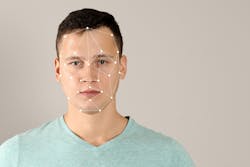SIA looks to clear the air on facial recognition
To say that facial recognition technology has come under scrutiny as of late would be an understatement.
Following San Francisco, which was the first U.S. city to ban government use of the technology last year, Boston became the second largest city in the country to also prohibit its use earlier this summer.
Aside from municipal bans, facial recognition has also caught the attention of federal legislators. In late June, House and Senate lawmakers introduced bicameral legislation that would prohibit federal agencies from using the technology as well as strip support from state and local law enforcement agencies that also leverage it. Earlier this month, Sens. Jeff Merkley (D-Ore.) and Bernie Sanders (I-VT) introduced a bill that would ban private companies from collecting biometric data without consent.
In response to this growing backlash against the technology, the Security Industry Association (SIA) this week released a set of guiding principles to help law enforcement, as well as public and private entities, develop policies for responsible and ethical use of facial recognition systems. SIA’s nine core principles include:
- Ensuring transparency surrounding the use of facial recognition.
- Establishing a clear and defined purpose for the use of facial recognition by organizations.
- Using high-performing and accurate technology.
- Incorporating human oversight and review.
- Protecting data security.
- Ensuring privacy by design.
- Training and educating users of technology.
- Improving or eliminating biased or discriminatory software.
- Maintaining ethical acquisition of facial recognition technology.
“SIA recognizes that some community leaders have expressed deeply-held views calling for the end of facial recognition technology use by law enforcement and the private sector. We respectfully but firmly disagree. Facial recognition technology offers tremendous benefits to society when used effectively and responsibly and with appropriate safeguards,” SIA CEO Don Erickson said in a statement announcing the principles. “We invite all stakeholders to review these well-thought-out principles and engage with us in meaningful discussions leading to common-sense approaches to how this technology is used.”
According to Jake Parker, SIA’s Director of Government Relations, the principles were developed by a special Facial Recognition Working Group that SIA formed at the beginning of the year that included member organizations involved in the development of facial recognition solutions as well as systems integrators. The SIA Data Privacy Advisory Board and SIA Executive Committee also contributed to the development of the principles. “One thing we did was take a real close look at the current policy landscape and look for ways that we can help policymakers as they try to address the issues that have been raised about the technology,” he says.
Parker says support for many of the initiatives to ban facial recognition, particularly those in San Francisco and Boston, have been based on a misunderstanding of how the technology works and how it is used in the U.S.
“Another part of our objective is to help educate policymakers on how these systems are actually employed now, so that we’re having a conversation based on reality,” Parker adds. “We’re going much deeper here and providing some real specific guidelines that could be turned into a legislative framework depending on what the issue is that’s being looked at.”
Perhaps the biggest thing that has gotten lost in the conversation about the potential misuses or abuses of facial recognition, according to Parker, are the security benefits it provides to organizations in both the public and private sectors.
“If you ban a technology over concerns that the government will use it for surveillance purposes… you’re also banning many other non-controversial types of uses that people aren’t aware of. For example, in our industry, we’re focused on building security and building systems, so you’re also preventing technology from being used for access control and security applications around buildings,” Parker says. “The ban efforts that we’ve seen in some cities are really focused on law enforcement use, but the use cases are so varied that I think you need some kind of flexible framework for establishing those rules.”
While it may seem unusual to some industry observers that SIA is providing guidance on law enforcement use of the technology, Parker says no association, not even those within the law enforcement community, has really put together something this detailed on the topic. “Our members include the primary providers to law enforcement and other applications as well, so we have a significant involvement there,” he adds.
For more information or to download a copy of “SIA Principles for the Responsible and Effective Use of Facial Recognition Technology,” click here.
Joel Griffin is the Editor-in-Chief of SecurityInfoWatch.com and a veteran security journalist. You can reach him at [email protected].About the Author
Joel Griffin
Editor-in-Chief, SecurityInfoWatch.com
Joel Griffin is the Editor-in-Chief of SecurityInfoWatch.com, a business-to-business news website published by Endeavor Business Media that covers all aspects of the physical security industry. Joel has covered the security industry since May 2008 when he first joined the site as assistant editor. Prior to SecurityInfoWatch, Joel worked as a staff reporter for two years at the Newton Citizen, a daily newspaper located in the suburban Atlanta city of Covington, Ga.

